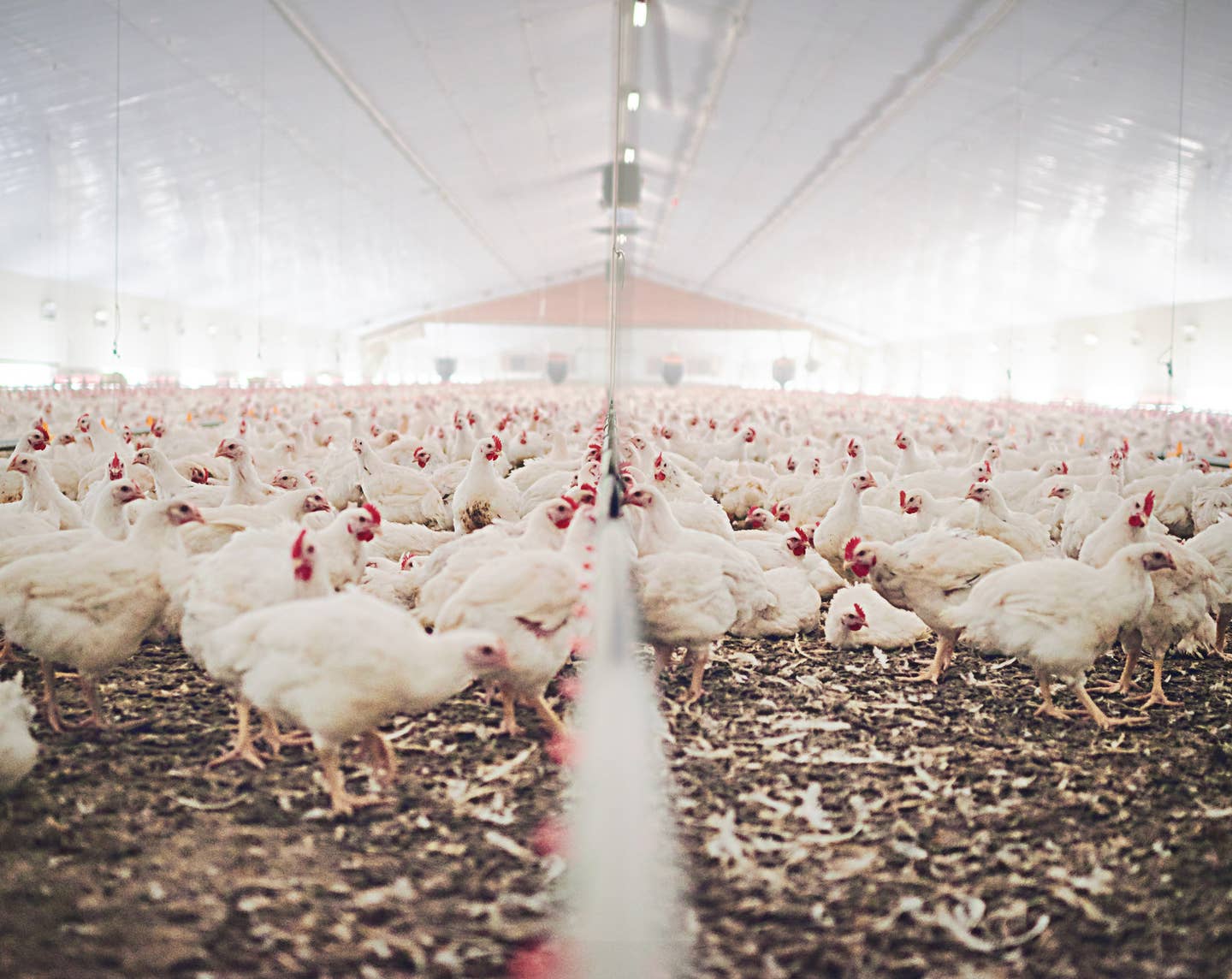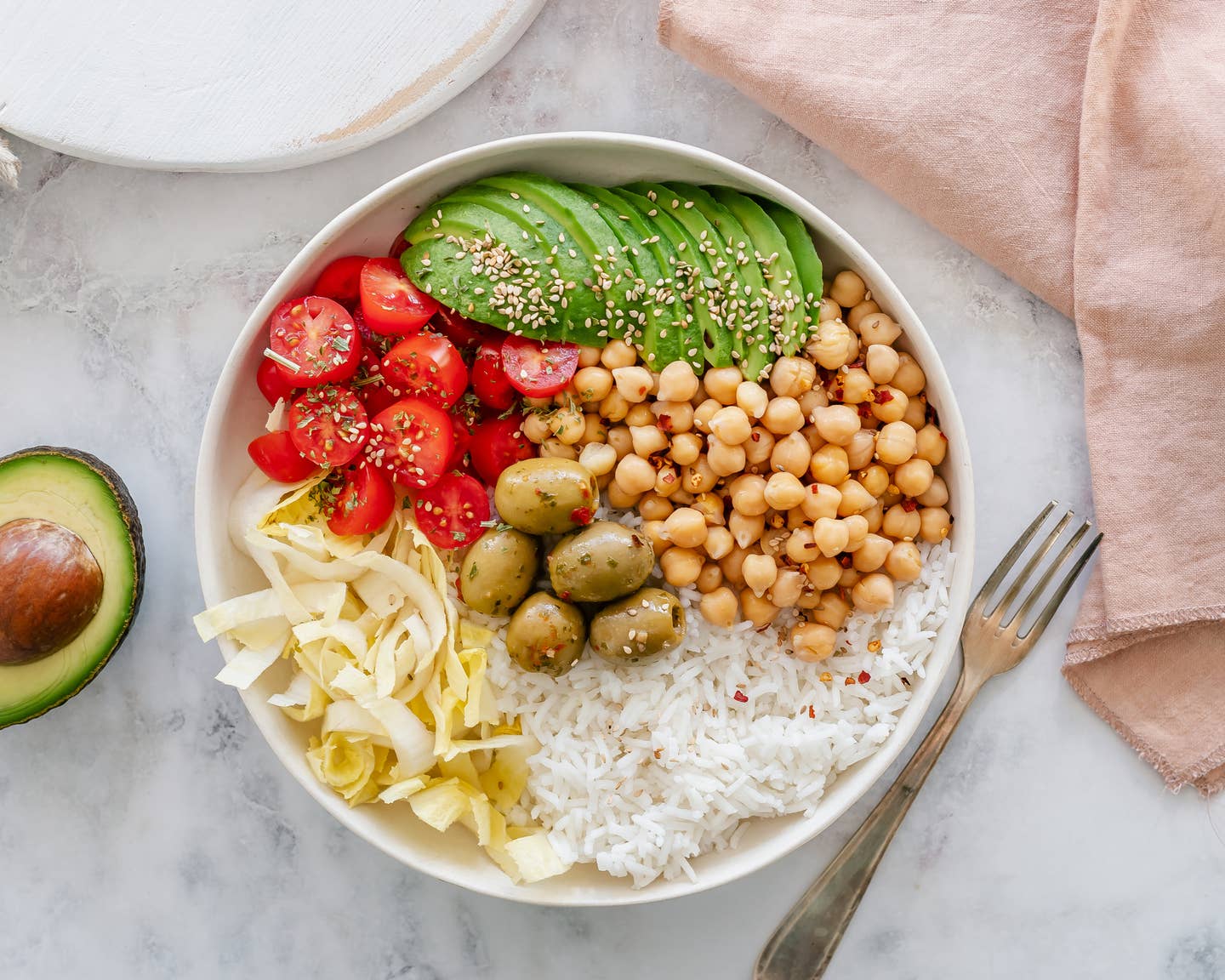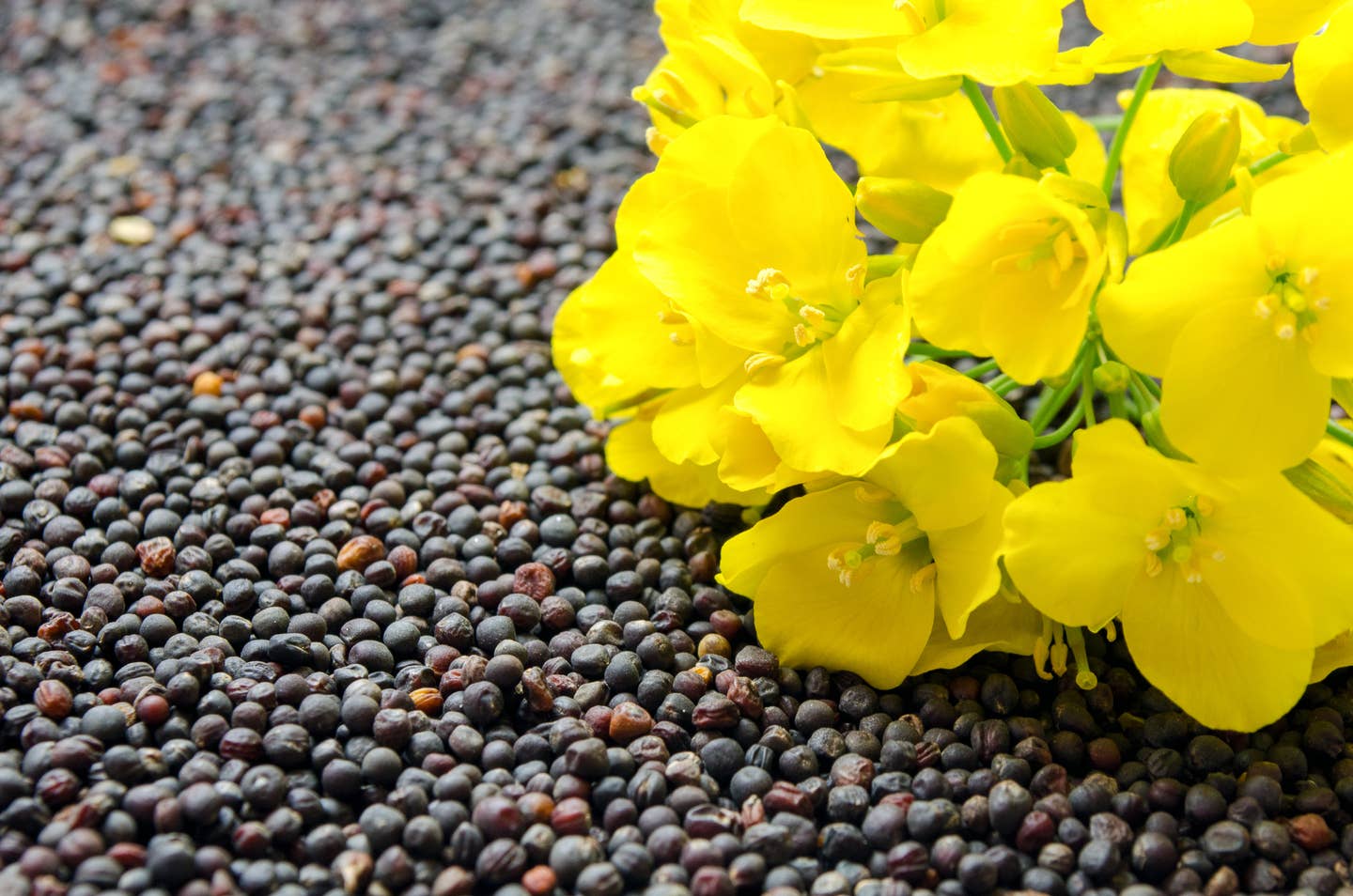
Your Food May Contain a Cancer-Causing Chemical. What to Do About It
Just when you think you're eating a healthy dish of whole grains like oatmeal or whole wheat bread, we now learn that much of the crops like wheat, corn, and soy that are grown in America have been sprayed with a controversial chemical, glyphosate, the active ingredient in Roundup, that has been tied to cancer. An $11 billion class action suit is currently paying out damages to growers and farmers or anyone who worked with Roundup and has non-Hodgkins Lymphoma or other forms of cancer and organ failure. The question is: How much glyphosate is safe, and what are the long-term effects of eating it in our food system? The answer is, that depends on who you ask.
Before you drop your avocado toast, understand that there are ways to protect yourself from this potentially harmful herbicide, as long as you know what is getting into and onto our food. What you may not want to hear is that the best way is to buy only organic-grown crop food, which is not only more expensive but also offers no sure-fire guarantee of avoiding glyphosate. So what to do? First, learn about how much glyphosate is in our food, then write to your local representative to support stricter rules and regulations from the EPA, which is allowing growers to use glyphosate, at higher levels than anywhere else in the world.
Glyphosate is in Everybody. It's Also In Most of Our Crops
First, it's probably true that you have already ingested this chemical in your food. An estimated 90 percent of Americans have pesticides, herbicides and preservative byproducts in their bodies, according to a study that measured pesticide residue found in urine and blood. These chemicals come into our bodies primarily from eating products that contain crops that have been sprayed with glyphosate, which is most grains grown in this country. It is also used on other crops that are genetically modified to withstand the harsh chemical.
The EPA says glyphosate in food is safe for humans, since only a trace amount reaches our bodies, but in Europe, the amount that is allowed is much less than what is considered safe in the US.
The recent class-action suit against Monsanto, the original maker of Roundup, and Bayer, which bought Monsanto in 2018, has directed consumer attention toward the fact that Roundup is a potentially cancerous herbicide, depending on the potency and duration of exposure to the chemical, which has been designated as a carcinogen by the WHO.
Here's what is known, and not under debate: Glyphosate is a “non-selective” weed killer: It will cause death to any green plant unless it has been bioengineered to withstand it. (This is why you need to look for the label that a food has been bioengineered, and avoid those foods.)
Glyphosate has been in use in the US since 1976, and once Monsanto developed grass seeds that could withstand it, the weed killer because of the number one most used herbicide in the country and the world. But studies have shown that glyphosate has been linked to illnesses in humans and damage to the environment and wildlife species. The International Agency for Research on Cancer (IARC) categorizes glyphosate as "possibly carcinogenic to humans" but the debate has raged on as to what dosage or exposure is high enough or sustained enough to be considered harmful.
Bayer, which now owns Monsanto, has had to pay billions in legal damages in over 100,000 cases of farmers and growers (and others exposed to glyphosate as part of their jobs) who were diagnosed with non-Hodgkins Lymphoma or other cancer and had to miss work and were debilitated by their illness. The settlements continue, as more cases keep coming forward to join the class of eligible injured parties. The suit could balloon to $25 Billion before all is said and done.
Glyphosate Is Still Widely Used on Crops
Now a new geological survey shows that the majority of Americans have been exposed to this potentially cancer-causing chemical in their food, but is the level that it exists in our food system considered safe? And what should you do if you want to lower your overall chemical exposure over the course of your lifetime?
A new NBC report looked at where glyphosate is being used most, and the website showed a map of the US that shows the herbicide is being used on nearly half of all corn, wheat and soybean crops that are grown in the U.S., especially in the bread basket states of Iowa, Illinois, and Indiana. Glyphosate is also widely used by growers across the south and west, including Colorado.
Lawsuit Against the EPA and Growers is Pending
How does this affect you as a consumer? Glyphosate has been found in products such as processed bread, cereal, crackers, and cookies. A lawsuit filed by the NRDC against the Environmental Protection Agency and various growers' associations (as well as golf course maintenance groups that also use glyphosate) assets that the EPA, a government agency that was created to protect our environment and consumers from harmful chemicals and pollutants, has not acted to curb the widespread use of glyphosate.
The EPA, the lawsuit claims, is not doing its job to protect the environment and our health. Because pharmaceutical giant Bayer is now fighting new lawsuits against the use of glyphosate, the battle for chemical-free food is far from over and the lawsuit is trying to force the US government to take action.
Is Glyphosate Safe? The European Union Is Stricter Than the US
For nearly 50 years, Monsanto (which Bayer bought for $63 billion in 2018) has been polluting the soil with glyphosate, giving rise to crops that are genetically modified (and now bioengineered) to withstand being sprayed. Glyphosate has been linked in the lab to tumor growth in animals, and the International Agency for Research on Cancer (IARC) has classified glyphosate as "probably carcinogenic to humans."
How much exposure to glyphosate is harmful? This is undetermined. The EPA claims humans are safe from the level of exposure that we get from our food. Yet data shows that consumers in the Midwest, Colorado, and several Southern states have endured the highest exposure in their soil, but the same food that is grown there makes its way across the US and ends up on store shelves thousands of miles away.
European regulators have been much stricter when it comes to limits on glyphosate usage. The EPA's glyphosate safety limit currently allows twice that set in the European Union. When the EPA concluded that glyphosate presents no significant risks to human health in 2020, a federal appeals court rejected the decision and the lawsuit was allowed to continue.
That lawsui, filed by the Natural Resources Defense Council against the EPA as "respondent", together with many of the large growers as "interveners" including the National Association of Wheat Growers, the National Cotton Council, the American Farm Bureau Federation, the National Corn Growers Association, the American Soybean Association, the National Sorghum Producers, the Agricultural Retailers Association, the National Association of Landscape Professionals, Monsanto Company, Golf Course Superintendents Association of America, and the American Sugarbeets Growers Association.
In a different world, you might imagine that the EPA would be on the side of protecting the environment from harsh, potentially cancer-causing chemicals, not making it easier for growers to pollute the natural resources with more chemicals than anyone knows is safe for humans. The EPA, after all, is required by the Federal Insecticide, Fungicide, and Rodenticide Act "to regulate pesticides, which are defined to include herbicides."
An NBC News analysis of 2019 USGS agricultural glyphosate usage data found:
- An average of nearly 130 pounds of glyphosate herbicides were sprayed per square mile in the US.
- Lake County, Colorado, had the single highest glyphosate usage rate of any county, with almost 2,000 pounds sprayed per square mile.
- More than 55 million people live in counties with above-average glyphosate use.
- Iowa and Illinois (where most of the US corn and soy are grown), accounted for 15 percent of US glyphosate usage.
- Southwestern and Northeastern states used the least glyphosate.
The EPA That Regulates Chemical Use in Industry Is Not Taking Action
Still, the EPA maintains that these chemicals have no risk to human health. Several politicians and activists have petitioned the EPA to properly address the public health risks that this herbicide ingredient presents to the American consumer base.
“Glyphosate is the most widely used chemical weedkiller in human history because of genetic engineering,” said Dave Murphy, the founder of Food Democracy Now, an advocacy group that tests glyphosate in food. “It’s sprayed ubiquitously and Monsanto has, for decades, just maintained that it’s the safest agricultural chemical ever made.”
Back in 2015 Glyphosate Was Linked to Cancer
When the IARC classified glyphosate as a Group 2A carcinogen, Monsanto (and later Bayer) was flooded with lawsuits that cost the company over $10 billion dollars, many of which are still in litigation, which Bayer is fighting. California lists glyphosate as a chemical known to cause cancer, a classification that has been contested by both Monsanto and the EPA.
“Given the serious risks associated with glyphosate, the agency’s pattern of failing to adhere to its cancer assessment guidelines and the court’s vacatur of the human health portion of the agency’s most recent human health assessment, EPA must ensure the most rigorous final assessment possible,” Sen. Cory Booker (D-NJ) Booker wrote in a letter sent to EPA Administrator Michael Regan. “It is unacceptable for the agency to continue to reassert conclusions built on inconsistent findings.
“I urge the EPA to closely follow its Guidelines for Carcinogen Risk Assessment in its current review of glyphosate in order to protect our nation’s public health from this dangerous chemical, wrote Booker.
Health Risks Associated With Glyphosate
Despite contradictions between the EPA and IARC reports, peer-reviewed studies have revealed a significant connection between glyphosate exposure and health issues, including cancer. Two studies found that the herbicide glyphosate potentially impacted the gut microbiome and disrupted healthy hormone levels. Research conducted by Robin Mesnage, a toxicologist at King's College London, found that glyphosate consumption can cause DNA damage and alter healthy liver metabolism.
Is Glyphosate Used on Your Crops?
Monsanto first introduced genetically engineered seeds that could survive glyphosate sprays in 1996, and since, American agriculture has developed a dependency on the potentially dangerous chemical.
Currently, nearly 90 percent of corn and soybean crops are modified to withstand glyphosate, according to the U.S Department of Agriculture. And the agricultural sector ensures that it's used. Nearly half of all planted acres of corn, cotton, and soybeans are sprayed with weedkillers containing glyphosate.
“Glyphosate is the most widely used chemical weedkiller in human history because of genetic engineering,” Dave Murphy, the founder of Food Democracy Now, said. “It’s sprayed ubiquitously and Monsanto has, for decades, just maintained that it’s the safest agricultural chemical ever made.”
Research and lawsuits remain ongoing, but data points to dangerous levels of glyphosate nationwide. Currently, Bayer is working to remove glyphosate in several Round-Up products but affirms that the decision is to mitigate the mounting lawsuits. Crop production nationwide will still use the glyphosate formula. If you consume corn and soybean products, it is likely that you have eaten food sprayed with glyphosate.
Can Organic Crops be Sprayed with RoundUp?
Technically, organic farming certifications require that the growers can not use glyphosate on their crops, but some crops have still tested positive for it. How can that be? Farmers may be spraying the soil before the seeds are planted, the make sure weeds won't grow, but the crops will.
Even Non-GMO labels won't certify that the crops are organic, and recently the confusion over what GMO and Non-GMO stand for has been clouded by the fact that many crops are genetically modified, but that doesn't mean they are being modified to withstand the spraying of RoundUp. There is a new label to look for, that went into effect this year, and it is "Bioengineered" since those foods are most likely to have been altered in the lab to withstand the harshness of being sprayed with glyphosate or RoundUp.
"Bioengineered" Labels Are the New GMO
This January, the USDA released a new food label that marked foods as bioengineered. Most genetically modified foods were engineered to withstand being sprayed with the weed killer Roundup, linked to non-Hodgkins lymphoma. The new label aims to grab the attention of consumers that have grown used to "Non-GMO" labels.
However, the labels only indicate that the food products are bioengineered to withstand chemical preservatives or herbicides, not to clarify the chemicals used.
“The worst part of this law is the use of the term ‘bioengineered’ because that’s not a term most consumers are familiar with,” according to Gregory Jaffe, director of the project on biotechnology for the nonprofit Center for Science in the Public Interest, quoted in The Washington Post. The label change was driven by the fact that the term “GMO” had come to be perceived as pejorative, The Post points out, whereas bioengineered is more accurate.
Foods that Contain Glyphosate to Avoid
The air and water is filled with glyphosate and only getting worse, according to a study that tested samples in 2007 and 1995, and projected that the more genetically modified our food becomes, the worse it is for human health since more herbicides get used on these crops. Some scientists link the use of glyphosate to the rise of gluten intolerance, as our crops have morphed into a type of modified gluten that makes some people sick.
Non-Governmental Organizations like Food Democracy Now!, and The Detox Project have tested a variety of products for glyphosate, according to a post from Sokolove Law which has compiled this list of types of foods and examples of brands that have tested positive for glyphosate in their food:
- Granola by Quaker, KIND, Back to Nature, Nature Valley
- Instant oats by Giant, Quaker, Umpqua, Market Pantry
- Whole oats by Quaker, Bob’s Red Mill, Nature’s Path, Whole Foods
- Cereal by Kashi, Kellogg’s, including Lucky Charms and Cheerios
- Snack bars by Quaker, KIND, Nature Valley, Kellogg’s
- Orange juice by Tropicana, Minute Maid, Signature Farms, Kirkland
- Crackers, including Cheez-Its, Ritz, Triscuits, Goldfish
- Cookies by Annie’s, Kashi, and Nabisco (Oreos)
- Chips by Stacy’s, Lay’s, Doritos, Fritos
Glyphosate has also been found in Ben & Jerry’s ice cream, non-organic cotton products such as clothing and tampons as well as in drinking water. It’s been found in 75 percent of air and rain samples according to the USGS study of pesticides in air and rain that compared samples in Mississippi in 2007 to those from 1995. That story points out that the use of GMO superweeds means that more and more glyphosate needs to be used. to kill the resistant weeds. Now herbicides and pesticides are used so liberally that, according to a 2017 study, glyphosate is regularly found in human urine.
Perhaps most discouraging is new findings on glyphosate in organic foods, which are supposed to be free of herbicides and pesticides. While most organic foods contain lower levels of chemicals than conventional foods, newer tests show that levels in organic foods are closer than ever to what is found in non-organic foods.
Bottom Line: Your Food Likely Contains Glyphosate, Linked to Cancer
Glyphosate, the main ingredient in major herbicides including Roundup, is potentially linked to cancer risks, and a new report finds that it's in most of the crops like corn, wheat, and soy food we eat. Following its classification as a probable carcinogen in 2015, lawsuits have challenged the EPA to take action to limit the use of glyphosate on food crops.
To avoid glyphosate, your best bet is to buy organic food, seek labels of organic ingredients and look for foods that do not contain "bio-engineered" ingredients, which have been altered in the lab to withstand being sprayed with glyphosate.
For more plant-based happenings, visit The Beet's News articles.
More From The Beet






